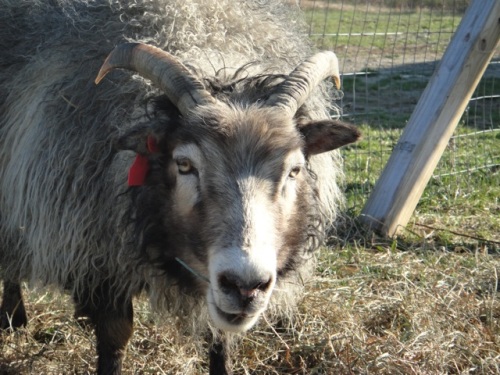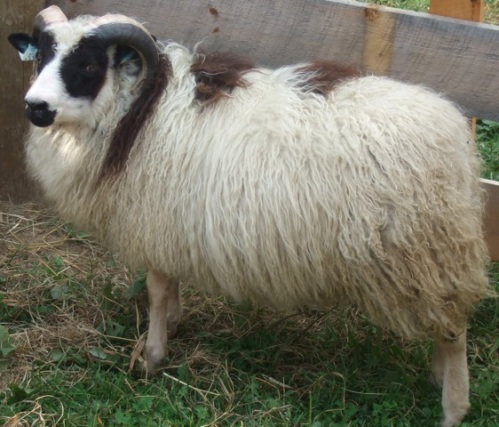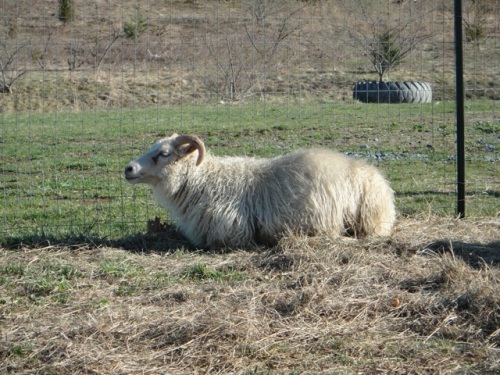Molly’s 3 today! We’re hoping that Molly will lamb this weekend, actually. I think she’s in the lead for first lamb on the ground at Morningstar Meadows!
EWE MIDWIFERY
OK. So I guess that having had 8 children of my own, including a set of twins, I have always had a desire to be a midwife. A ewe midwife wasn’t exactly what I had in mind, but it will have to do for now! SO – I thought I’d interrupt the waiting game (the ewes still seem status quo out there!) with a little Lambing 101.
What we have here is our lambing kit. We hope and pray that all of the ingredients of the kit will not be used, but I’ll go through some of them for your interest… When the lambs are being born, hopefully there will be nothing for us to do but watch! If Mama ewe has been at it hard for more than an hour or so, it might be time to get a feeling for what is going on in there. We will wash up our hands and her perineal area, don an obstetrical sleeve with a clean glove over the hand part, add an adequate dab of ob lube and reach in to see the positioning of the lamb(s). What we hope to see/feel is a nose and 2 front feet (from the same lamb, mind you!) Twins can get quite jumbled up in there, so you have to carefully feel for hind feet vs. fore feet, right and left vs. 2 rights/lefts. Once the necessary presenting parts are in place, we can use the lamb puller (center of photo -white handle with noose at the end) to slip over the head and feet to assist in pulling the lamb in an out and downward motion. We even have oxytocin on hand if she needs some chemical assistance with increasing contractions. Ideally a newborn lamb will be cleaned up by Mama and will be up and standing and nursing in no time, but sometimes it is necessary to help this. Hence the pile of towels, suction bulb for the nose/mouth. Sometimes poor doing lambs are even picked up by the hind legs and carefully swung around you to use centrifugal force to help clear airways. Umbilical cords will then need dipped in povidine iodine solution to avoid umbilical infections, which can be deadly. For poor doing lambs, it may be necessary to give them glucose, IV fluids, warm enemas, etc. Occasionally a mother will reject a lamb. We have powdered colostrum and a lamb nipple on hand in the event that we have a “bottle lamb.” For the first lambing, we will attempt to milk out some of the ewe’s colostrum to freeze for any future needs – hence the ice cube tray. We also have a little french catheter to use to stomach tube a lamb that is unable to swallow. Healthy lambs will only need their cords dipped, a dose of oral selenium/vitamin E and their birth weight checked (scale in front, center of photo) – later they will need a clostridial vaccination and identification tags (front right of picture) for their ear. How do we pamper Mama after all of this? As soon as we can, we bring the new family into what is called a “lambing jug.” Here she and the lambs will have some privacy to bond and protection from the other ewes. She won’t have to compete at the hay pile, and the lambs will stay safe close to her. She will be given a big bucket of slightly warm water with molasses to give her a little pick me up and be sure that her energy levels stay up. Occasionally she will need calcium or glucose given by injection, but this would not be the norm. After a couple of days here they will be turned out with the others onto the pasture. And so that ends our diversion for today, as we wait for the joyful moment of our first lambing!Birthday Boy
Happy First Birthday, Monty! This week you’re gonna be a dad (hopefully!!)
OK, we’re tired of waiting!
Well, udders keep getting bigger, and so do the ewes! Roy keeps saying that a couple are wider than they are tall! We just did a little photo shoot – you can see on their left sides how pressed out their rumens are! Here’s Tillie and Bindi:
Here’s Roxanne enjoying the fresh air and sunshine. Her first birthday is Holy Saturday!
Lying down brings some relief, but then they realize how it just makes is harder to breath because everything pushes up on the diaphragm! So, I think the race is still on between Molly and Millie. Both look as if they’ve dropped a bit. C’mon girls! Everyone is waiting!!
The waiting game begins!
Well, today marks day 142 from “the day the sheep got married,” as our younger children refer to it! The average gestation for Icelandic sheep is 142-144 days. Barb at Jager Farm told us when she brought us our little starter flock: “in at Thanksgiving – lambs for Tax day!” So apparently income tax day has been delayed this year until April 18th – did someone tell our ewes that?!
We see no signs of an impending lambing at this time, although on close inspection last night, I was surprised to see that Molly’s udder is bagging up. We were expecting Millie to lamb first, however Molly may just win out! It’s so hard to say at this point. Thunderstorms and heavy rain are predicted for Saturday night, so I hope our first lambing doesn’t happen then!
It’s a riot watching these girls waddling around. And just when you start feeling sorry for their bulging bodies, they fool you and race over to the fence when they see you coming, hoping to get a little snack! As tempting as it is to comply, though, we do have to watch their girlish figures at this point, as an overweight ewe at lambing time can make for difficult deliveries. That being said, we can’t exactly put them on diets, as they really need good nutrition during this time to go through labor and delivery and nursing lambs!
And so the race is on…who will have the first lamb? Millie or Molly? How many will she have? Will it be in the dark of night and we’ll miss the whole thing? Can you tell I’m getting excited!? All I know is that these girls aren’t talking, so we’ll just have to wait and see!
Preparing the Maternity ward!
This weekend we will make the final preparations for our first lambs! We will be setting up our small barn as a combination labor and delivery area and post partum room. If the weather is fine, the ewes may choose to just deliver their lambs in the pasture, but we will be giving them the option of coming into the barn if they want. After that, we have an area on the opposite side of the shed in which we can confine the new family to allow for bonding time. Only Millie is a proven ewe – the others are all beginners, so they might need to be confined a couple of days to give them time without the distraction of the other ewes.
After delivery, Mom will be given a nice shot of karo syrup in their water for a pick-me-up. The lambs will need to have their cords cut to the proper length and dipped in iodine. Our first ewe to deliver will have to sacrifice to us some of her colostrum. I can’t even imagine what it will be like to milk our first ewe! We will freeze her colostrum in an ice cube tray and save it for any future lambs this season who may be rejected by the ewe and need bottle fed.
After a day or so, everyone gets a workover. Mom gets her “pedicure.” Babies get a shot of Vitamin E/Selenium, as our soil is deficient in this mineral. They’ll also get a ear tag, and we’ll have to start working out their color for their registration. We’re hoping for lots of ewe lambs to build up our flock!
So – in less than a week we could have our first lambing! The countdown is on! I just hope the first one is on the weekend when Roy is here with me!
Amazing video of Serbian women processing wool in the old tradition
A friend shared this with me today. To see these women – working so hard – so skilled at what they do – sharing stories, a laugh, and their Catholic faith. This is what our ancestors were made of…
Our new blog!
Well, here we go with our very first blog post for Morning Star Meadows Farm! We dedicate this blog to Our Lady, The Morning Star, to St. Isidore, patron of farmers, to St. Joseph, patron of the family, and to St. Francis of Assisi. May they be ever watchful of our blog, our farm and mostly our family.










